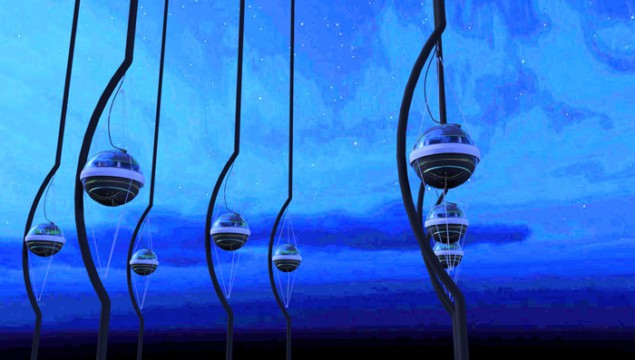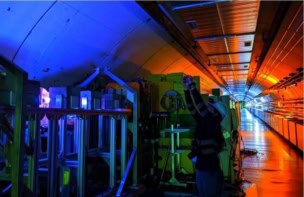
Researchers have found no evidence of sterile neutrinos in two years’ worth of data from the IceCube Neutrino Observatory at the South Pole. The international scientific collaboration that runs the detector says that the results cast serious doubt on the existence of these hypothetical particles.
Buried beneath the ice at the Amundsen–Scott South Pole Station, IceCube is designed to search for high-energy particles from space, including cosmic rays and neutrinos. It consists of 5160 light sensors suspended on 86 strings in 1 km3 of ice. When a particle interacts with the ultra-clear ice, it can create flashes of light that are then detected. In 2013 the IceCube collaboration announced the first ever detection of cosmic neutrinos.
Neutrinos are particles with no electrical charge and are known to come in three “flavours”: electron, muon and tau. They were originally thought to be massless, but the discovery that they can change, or “oscillate”, between different flavours suggests that they do have mass. There is much that physicists do not understand about neutrinos, and some experimental results are difficult to reconcile with the three-neutrino model. But the existence of a fourth type of neutrino, a sterile neutrino, could provide an explanation.
Harder to detect
Sterile neutrinos would only interact with other matter via gravity – making them even harder to detect than other neutrinos. If they do exist, they would be able to help answer important questions about neutrinos, such as why they have mass and whether they are dark-matter particles. Several experiments are probing the existence of sterile neutrinos, but so far none of the particles have been detected.
In the latest research, the IceCube collaboration performed independent analysis on two sets of data from the observatory, looking for sterile neutrinos in the energy range between approximately 320 GeV and 20 TeV. If present, light sterile neutrinos with a mass of around 1 eV/C2 would cause a significant disappearance in the total number of muon neutrinos that are produced by cosmic-ray showers in the atmosphere above the northern hemisphere and then travel through the Earth to reach IceCube. The first set of data included more than 20,000 muon-neutrino events detected between 2011 and 2012, while the second covered almost 22,000 events observed between 2009 and 2010.
As neutrinos travel through space, they oscillate from one flavour to another. Physicists know that this oscillation is modified when neutrinos travel through dense matter because the neutrinos interact slightly with surrounding electrons and nucleons. Sterile neutrinos, however, would not interact with matter, and this would result in a resonance effect on the oscillations of neutrinos at energies around a few TeV. Francis Halzen, IceCube’s principal investigator and a particle physicist at the University of Wisconsin–Madison in the US, says that this “should be clearly seen as a sharp depletion in our measured muon-neutrino spectrum”, and should also produce “a characteristic structure in the zenith-angle distribution of these neutrinos”. “Neither one is seen,” he adds. “The absence of this resonance is pretty striking and cannot be missed.”
Previous sightings ruled out
According to the IceCube collaboration, these results do not rule out sterile neutrinos completely, but they do exclude much of the parameter space in which they could exist. In particular, the results exclude, with a confidence level of approximately 99%, the allowed parameter space for several experiments that had observed anomalies in neutrino oscillations, which had been interpreted as possible signs of sterile neutrinos.
Halzen says that not finding the characteristic sterile-neutrino signal “really calls into question their existence, or their role in explaining any anomalies in the neutrino data that may exist”. Discussing the anomalies seen in neutrino oscillations, he says that “We know that neutrino oscillations call for physics beyond the Standard Model. It looks now less likely that sterile neutrinos are part of it.”
However, Patrick Huber, of Virginia Tech in the US, says that although “it is a beautiful result”, it provides “little we didn’t know” and “qualitatively does not change much”. “To address the sterile-neutrino question, a decisive experiment is needed. One possibility would have been to use stored muon beams, but this has been ruled as too expensive. I am, however, doubtful that this question can be settled without such an experiment, unless we are very lucky and for instance the next generation of short-baseline reactor experiments finds a signal for sterile neutrinos,” he told physicsworld.com.
The measurements and analysis are described on the arXiv preprint server.
UPDATE: The paper has now been published in Physical Review Letters.



